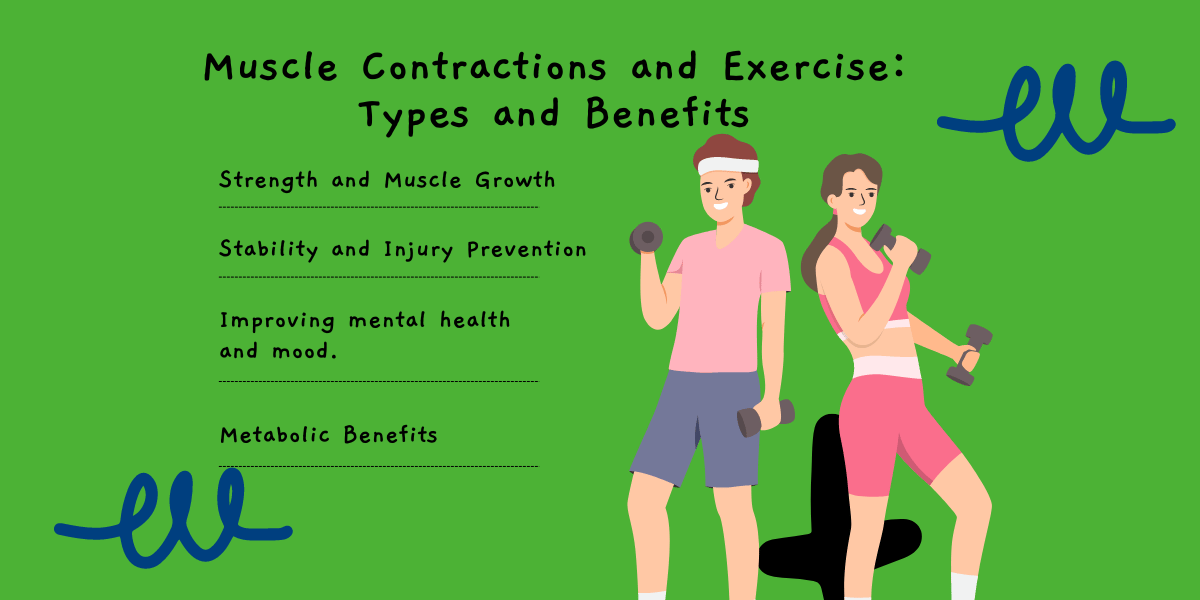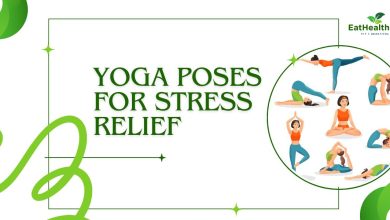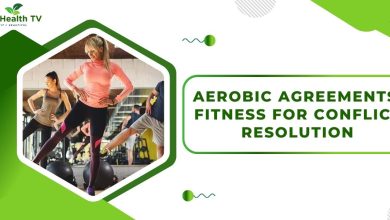Muscle Contractions and Exercise: Types and Benefits
Muscle Contractions and Exercise: Types and Benefits

Muscle contractions are the fundamental processes that drive our bodies every movement. Whether you’re lifting weights, going for a run, or simply standing up, muscle contractions are at work. Understanding the different types of muscle contractions and their benefits is essential for anyone looking to improve their fitness, enhance athletic performance, or maintain overall health. In this blog post, we’ll delve into the world of muscle contractions, exploring their types and the remarkable benefits they offer.
Types of Muscle Contractions
-
Isometric Contractions
Isometric contractions occur when muscles generate force without changing in length. Imagine holding a plank position or pushing against an immovable object. In these cases, your muscles are contracting isometrically.
-
Concentric Contractions
Concentric contractions involve muscles shortening while generating force. For example, when you lift a weight during a bicep curl, your bicep muscles contract concentrically. These contractions are responsible for the “lifting” phase of most exercises.
-
Eccentric Contractions
Eccentric contractions occur when muscles lengthen while under tension. In a bicep curl, the lowering phase involves eccentric contractions as the bicep muscle lengthens to control the weight’s descent. Eccentric contractions are also crucial for decelerating during movements like running.
Benefits of Muscle Contractions in Exercise
-
Strength and Muscle Growth
Concentric contractions, such as lifting weights, are central to building muscle strength and size. When you progressively overload muscles through resistance training, they adapt by becoming stronger and more substantial.
-
Stability and Injury Prevention
Isometric contractions, like planks or wall sits, improve stability and help prevent injuries by strengthening stabilizing muscles around joints. This is especially beneficial for athletes and individuals looking to maintain joint health.
-
Control and Flexibility
Eccentric contractions play a critical role in controlling movement and enhancing flexibility. By training muscles to lengthen under tension, you can improve your range of motion and reduce the risk of muscle strains.
-
Power and Athletic Performance
Explosive exercises, which combine concentric and eccentric contractions, help improve power and athletic performance. Activities like sprinting and jumping rely on the rapid generation and control of force.
-
Metabolic Benefits
All types of contractions contribute to increased energy expenditure. Muscle tissue is metabolically active, so the more muscle you have, the more calories you burn at rest.
-
Functional Fitness
Functional exercises, which incorporate various types of contractions, prepare your body for everyday tasks. This includes activities like lifting groceries, climbing stairs, or playing with children.
Conclusion
Muscle contractions are the driving force behind physical activity and exercise. Understanding the different types of contractions and their respective benefits empowers individuals to tailor their fitness routines to meet specific goals, whether it’s building strength, enhancing stability, or improving athletic performance. By incorporating a variety of exercises that target all types of muscle contractions, individuals can maximize the benefits of their workouts and lead healthier, more active lives.




